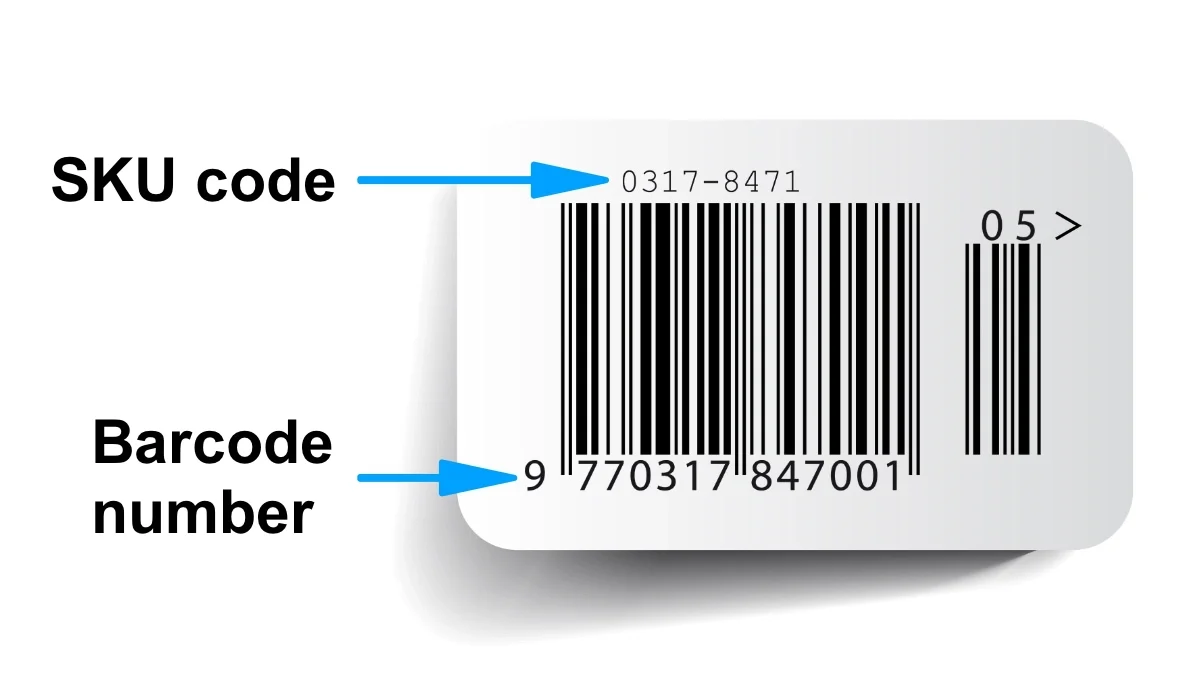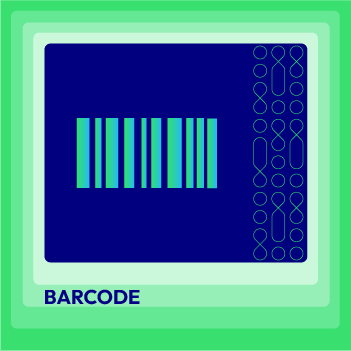What is an SKU? How Can It Help in Inventory Management?

Inventory management is necessary for a business with a high product volume. Without some system like SKU numbers, keeping track becomes chaotic; this leads to problems in order fulfillment, loss of a sale, and dissatisfaction among customers. It might turn into wasted time and will damage the business’s reputation. An SKU number is a straightforward method of identifying and keeping track of products. They help retailers find merchandise in minimal time; they introduce uniformity in arranging inventory and then further categorize the products by their attributes. In case you have an eCommerce website or an actual store, making use of an SKU number vastly eases operations and speeds up order processing. Throughout the tutorial, you will get to know what an SKU number is, how you can create one, and how you can use it effectively while managing your inventory.
What Is a Stock Keeping Unit (SKU)?
A stock-keeping unit, or SKU, is a scannable code that a retailer uses to track a specific product. In other words, each of the items in their inventory management system will have a unique SKU.

Normally, SKUs are 8 to 10 characters long, mixing letters and numbers to represent various features of the product, including price, manufacturer, color, and size.
Unlike other product codes, the SKU is generated by the business owner itself. This can be tailor-made to meet certain needs from vendors and customers alike for better accuracy in tracking inventory.
Why Is It Important to Have an SKU System in Businesses?
The SKUs are useful for the store owner and help them manage some key functions related to their inventory, sales analysis, customer service, and marketing.
Managing and tracking inventory
SKUs make it easy to see how many items of each type are in stock or how many have been sold, improving accuracy in inventory management and warehouse operations. They also help in finding something specific, especially if the retailers are arranging their inventory based on SKU for visual control. Also, SKUs help in identifying losses; for example, if there is any difference between the inventory count and sales it might be due to theft or misplacement.
Gather and analyze sales data
The SKUs provide an easy way of tracking sales data. Since the SKU numbers are placed on invoices or receipts, it is very easily possible for any retailer to analyze how many items of each were sold in any given period. This provides an accurate analysis of items that are either popular or profitable and provides a season-to-season overview of sales performance. While SKUs are not a necessity, they maintain consistency and efficiency that would otherwise be challenging to achieve. Using SKUs allows one to analyze issues swiftly using a short code in uniformity. It is quite different from attempting to track items by their descriptive terms, which vary.
Facilitate customer support and satisfaction.

SKUs have become reliable references for employees seeking items in the inventory or catalog. Therefore, this enhances customer service and shopper expectations. For example, in some instances where a customer sees something online and then walks into the physical store, a store employee can easily use that SKU from that online listing to help him find the same product in-store.
SKUs also guarantee convenience in reordering. Since the customer can search for an SKU or ask the staff to process a fresh order, the requirement for repetition of previous searches is removed. This makes life much easier for wholesale and B2B customers who have to place bulk orders and track products through their enterprise resource planning (ERP) systems.
Support marketing strategies
SKUs benefit marketers, too. They can use SKUs to recommend similar products online and track the sales of particular items within the marketing campaigns. Because each business has its own SKUs, no customer can use them to compare products across different stores. Due to this fact, it is safe to include SKU information in marketing materials, as it prevents potential customers from easily checking out the offerings of competitors.
How to Create SKU Numbers?
The best SKUs are not just random numbers, but they are made up of smaller parts that give essential details.
-
Most SKUs start with a 2 to 3-letter code showing the department or category of the item.
-
The second part describes things such as size, color, or sub-category.
-
The last part is usually a unique number - a shoe size in a shoe store.
It is by this method that each SKU becomes unique and helpful. For example, an employee, by looking at an item’s SKU, would approximately tell where it would go. Some tips for creating SKUs include:
-
Use short, standard codes for things like color or size; for example, ‘rd’ for red or ‘xl’ for extra-large.
- Keep codes brief but clear.
-
Make sure the codes do not overlap. For example, using ‘lge’ can refer to either ‘large’ or ‘lounge’.
- Follow the same process across products so it’s easier to locate items in inventory.
Since SKUs must be unique for each product, creating them by hand isn’t practical. Instead, use inventory or point-of-sale systems that generate SKUs automatically.
SKU Numbers Alternatives
SKU vs. UPC
SKU numbers aren’t the only product codes used in retail; UPCs (universal product codes) are also common.
Although an SKU and a UPC appear similar and often appear on the same product, they also serve different purposes. Here is a simple comparison of the two:
| SKU (Stock Keeping Unit) | UPC (Universal Product Code) |
|---|---|
| Used by the individual retail store | Used by several stores and the supply chain |
| Typically 8 to 12 characters | Always 12 characters |
| Identifies product features | Identifies manufacturer and item number |
| Can be both letters and numbers | Include number only |
| Created by retailers | Issued by the Global Standards Organization |
An SKU defines the kind of product and its attributes, while a UPC holds the manufacturer (the first six numbers), the item number (the following five characters), and the last as a check digit for validity.
SKU vs. barcode
A barcode is a set of black lines on the product labels and packaging that the retailers scan during checkout. Sometimes people refer to the barcode as the UPC because most of them have a UPC number.
Unlike SKU numbers, when stores make a barcode they are not creating a new UPC. Barcodes are given to all of the same products, regardless of where they are sold. In addition to that, though, retailers can also print stickers that have both a barcode and their SKU number.
SKU vs. serial number
A serial number is also used for tracking in case any warranty claims, repairs, or recalls arise. A serial number helps the manufacturer keep tabs on product batches and know which items are defective. Unlike the SKUs, which may apply to many units of a single product type, serial numbers apply to individual units.

FAQ
How can I obtain an SKU number?
SKU numbers can be found through the inventory management system in which each product is assigned a different SKU number. If a product still does not have an SKU number, then you are free to use one that you obtained online.
Is it possible to create my own SKU number?
Yes, you can create an inventory of SKUs yourself by developing an alphanumeric coding system that reflects your inventory requirements. Just make sure each is unique and consistent in format for easier identification and management.
Are SKUs and barcodes the same?
SKUs and bar codes are similar but not the same. SKUs are specific to a particular business; bar codes are given to all the same products, no matter where they are sold.
Do my products require an SKU?
Even though SKUs are not legally required, they make it a lot easier when managing inventory, fulfilling orders, or doing sales analyses, so, therefore, retailers should consider them beneficial.
Is It possible for two products to share the same SKU number?
The inventory system will have different SKU numbers for each product. However, two products can share the same barcode or UPC number.
Conclusion
To sum up, good inventory tracking provides insight into the patterns of sale for a business and guides restocking. It helps determine how an item turns over as well. A well-structured system of SKUs facilitates inventory management and permits its automation.
With an SKU architecture catering to your needs, those of your vendors, and those of your customers, while focusing on the key product features that truly matter, you will be in a position to manage your inventory with efficiency and support the growth of your business.






![Top 20+ Must-have Shopify Apps for 2025 [Free & Paid] - Mageplaza](https://cdn2.mageplaza.com/media/blog/must-have-shopify-apps/top-must-have-shopify-apps.png)
![[2025 Updates] Top 10+ Upsell Apps for Shopify - Mageplaza](https://cdn2.mageplaza.com/media/blog/best-upsell-shopify-app/cover.png)